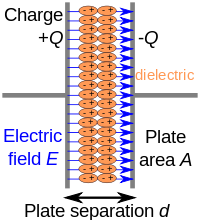
Photo from wikipedia
In this paper, the hysteresis behaviour of reactive magnetron sputtering process with oxygen admixture is studied by both experiment and model. The ground state number densities of titanium atoms and… Click to show full abstract
In this paper, the hysteresis behaviour of reactive magnetron sputtering process with oxygen admixture is studied by both experiment and model. The ground state number densities of titanium atoms and ions, and the deposition rates in high power impulse magnetron sputtering discharge were determined for a constant average applied power and pulse duration, while the repetition frequency and reactive gas supply were varied. The hysteresis curve reduced in width and shifted towards the lower oxygen supply with a decrease in the repetition frequency. These experimentally observed trends were well reproduced by a modified Berg model. The presented model utilised measured ionisation fraction of sputtered species and considered the back-attraction of the ionised sputtered species to the target. Significance of back-attraction process was observed as large fraction of ionised sputtered particles was found to be lost back to the target. This drastically decreased the number of particles deposited onto the substrate, which reduced not only the deposition rate, but also the gettering of the reactive gas. Consequently, the simulated hysteresis curve was shifted and reduced in width as it was observed experimentally.
Journal Title: Plasma Sources Science and Technology
Year Published: 2020
Link to full text (if available)
Share on Social Media: Sign Up to like & get
recommendations!